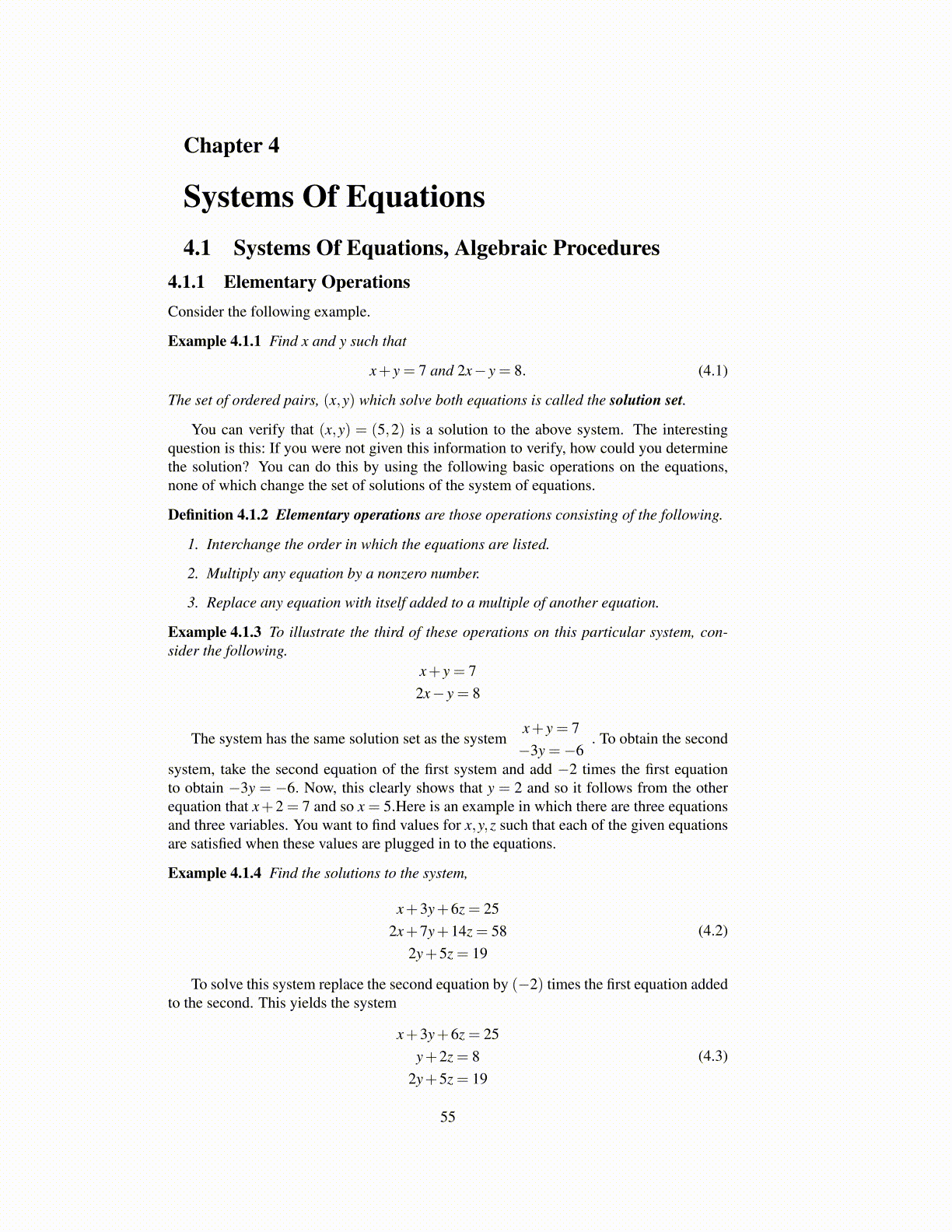
Chapter 4
Systems Of Equations4.1 Systems Of Equations, Algebraic Procedures
4.1.1 Elementary OperationsConsider the following example.
Example 4.1.1 Find x and y such that
x+ y = 7 and 2x− y = 8. (4.1)
The set of ordered pairs, (x,y) which solve both equations is called the solution set.
You can verify that (x,y) = (5,2) is a solution to the above system. The interestingquestion is this: If you were not given this information to verify, how could you determinethe solution? You can do this by using the following basic operations on the equations,none of which change the set of solutions of the system of equations.
Definition 4.1.2 Elementary operations are those operations consisting of the following.
1. Interchange the order in which the equations are listed.
2. Multiply any equation by a nonzero number.
3. Replace any equation with itself added to a multiple of another equation.
Example 4.1.3 To illustrate the third of these operations on this particular system, con-sider the following.
x+ y = 72x− y = 8
The system has the same solution set as the systemx+ y = 7−3y =−6
. To obtain the second
system, take the second equation of the first system and add −2 times the first equationto obtain −3y = −6. Now, this clearly shows that y = 2 and so it follows from the otherequation that x+2 = 7 and so x = 5.Here is an example in which there are three equationsand three variables. You want to find values for x,y,z such that each of the given equationsare satisfied when these values are plugged in to the equations.
Example 4.1.4 Find the solutions to the system,
x+3y+6z = 252x+7y+14z = 58
2y+5z = 19(4.2)
To solve this system replace the second equation by (−2) times the first equation addedto the second. This yields the system
x+3y+6z = 25y+2z = 8
2y+5z = 19(4.3)
55